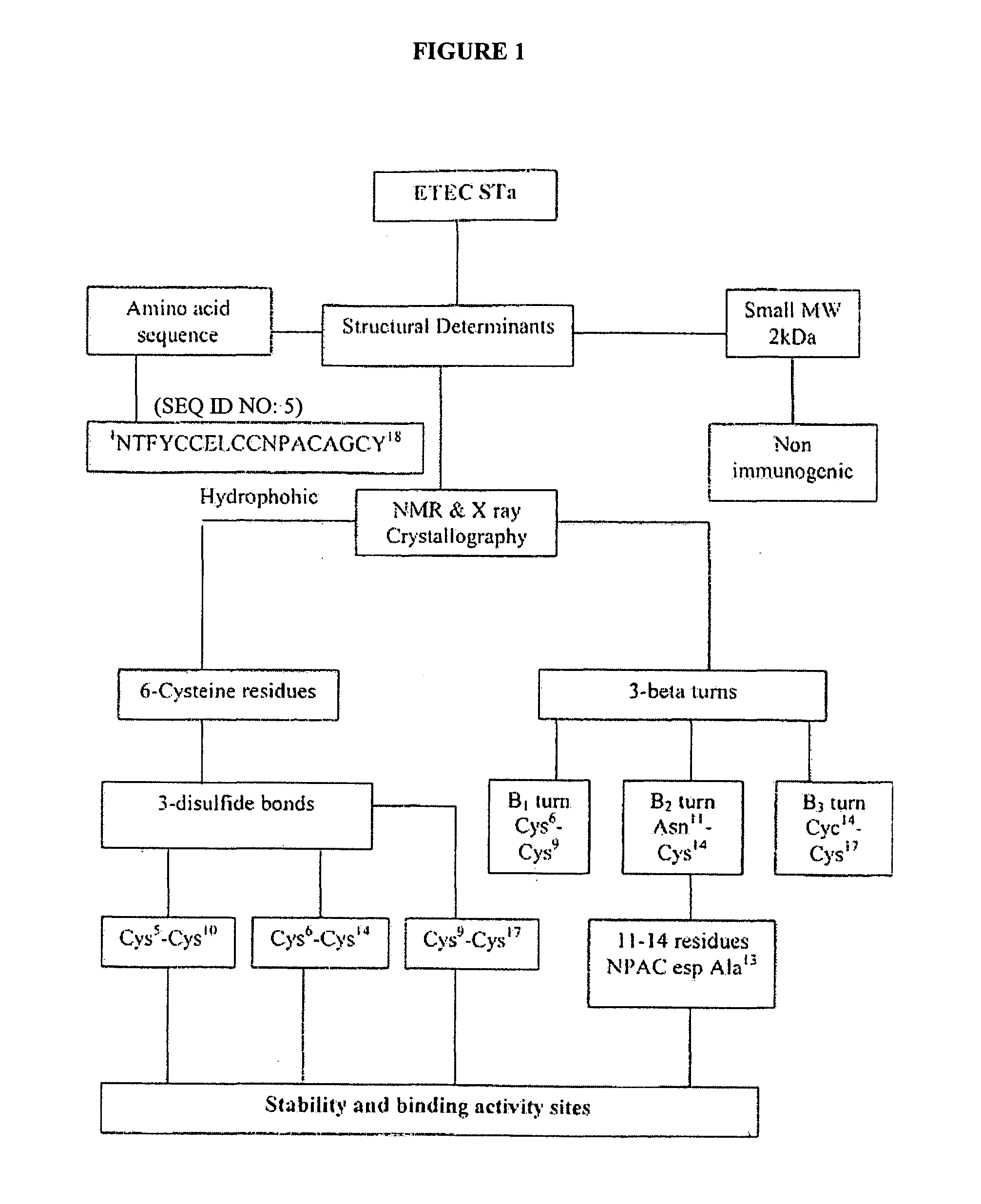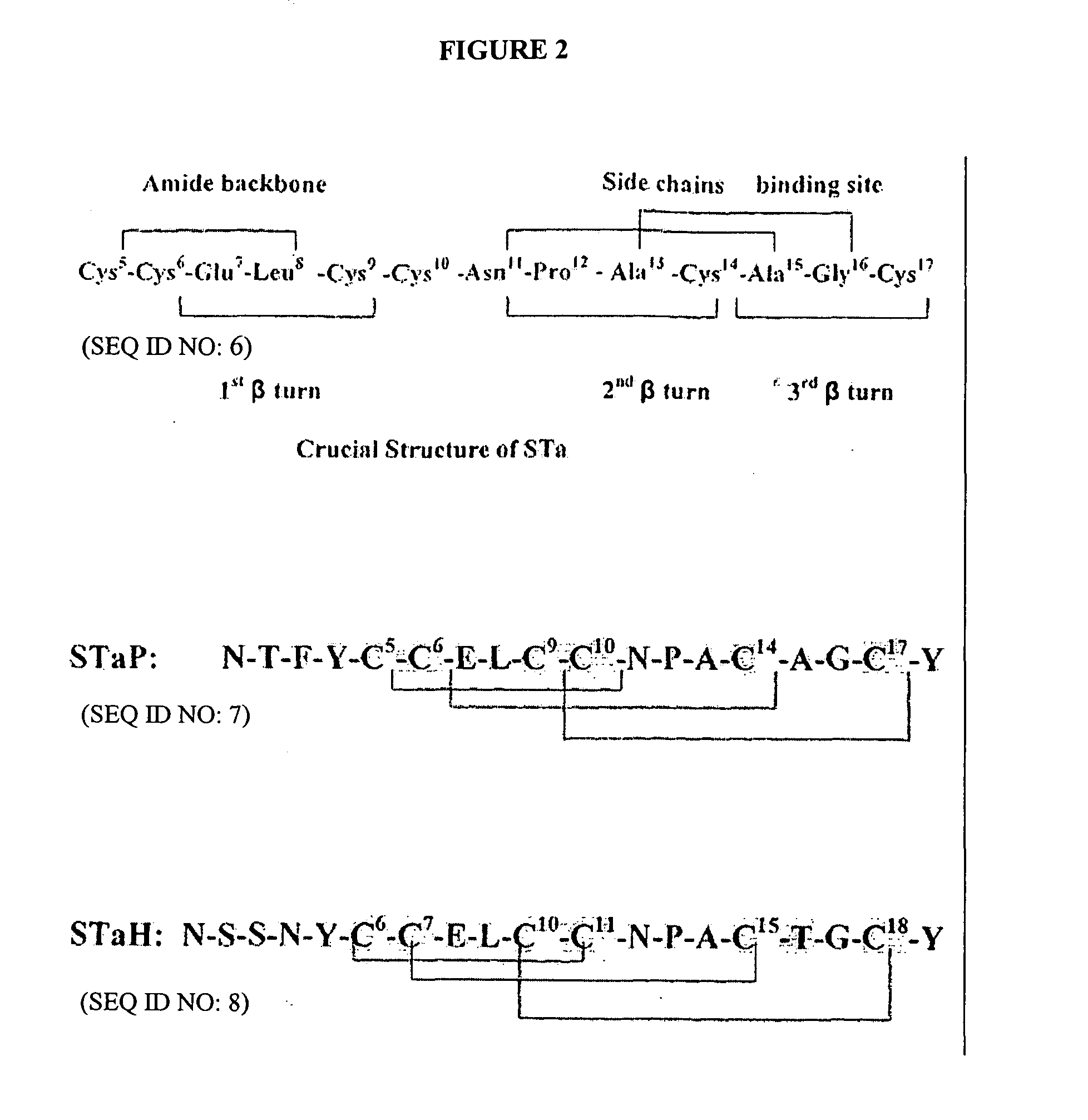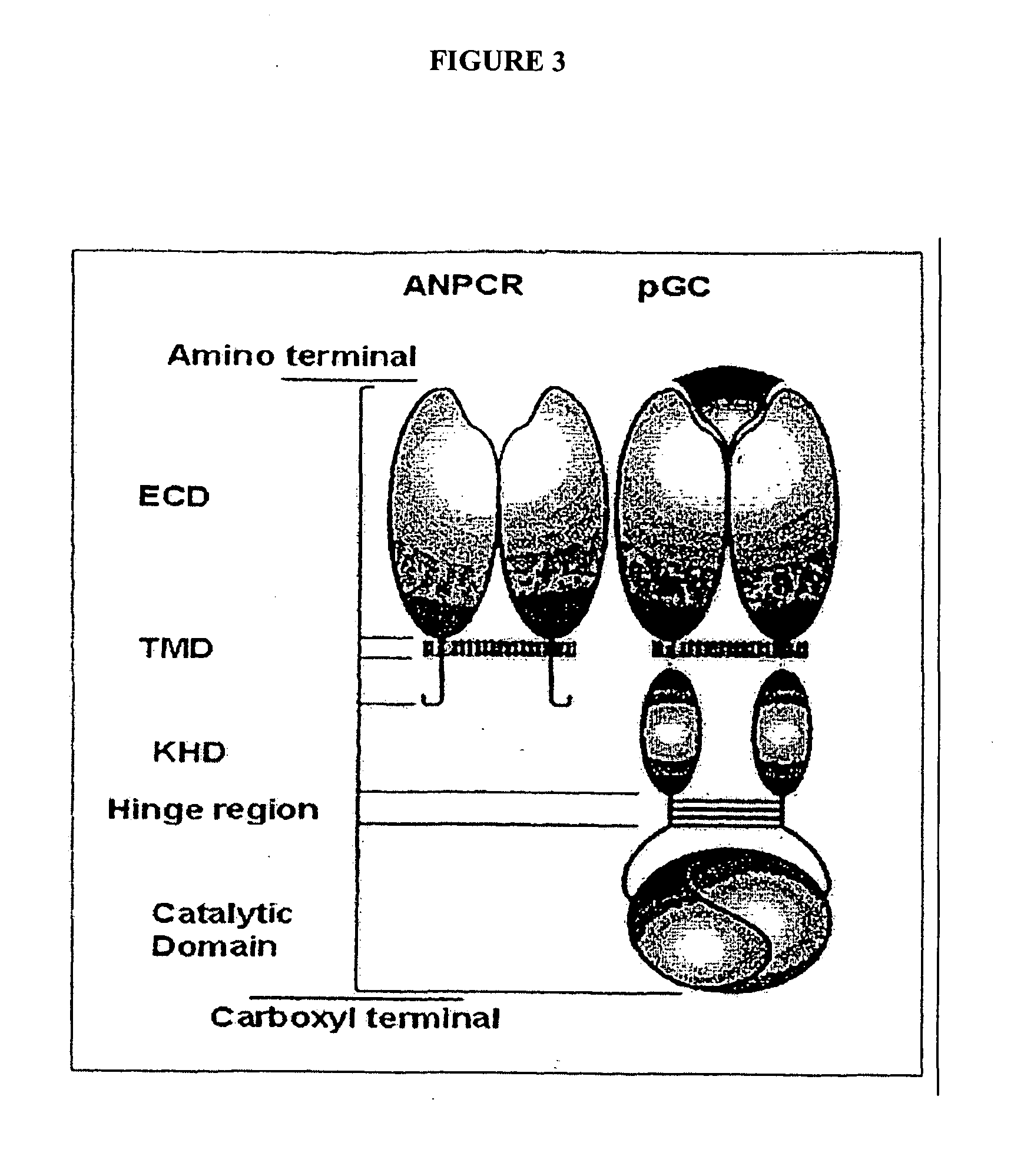Immunogenic escherichia coli heat stable enterotoxin
- Summary
- Abstract
- Description
- Claims
- Application Information
AI Technical Summary
Benefits of technology
Problems solved by technology
Method used
Image
Examples
example i
Materials and Methods
Animals
[0114]Swiss Webster Mice: A group of 20 Swiss-Webster (fifteen females and five males) was used to establish a colony as a source of suckling mice for STa bioassay. Exhausted females and males were continuously replaced with younger animals to ensure production efficiency of infant mice litters by the colony.
Reagents
[0115]All reagents were obtained from commercial sources and were of analytical grade. Mobile phases used for purification of STa include HPLC-grade methanol, trifluoroacetic acid, as well as the other chemical ingredients listed under this section. Verifying the ETEC K99+ Strain: The PCR protocol disclosed in Olsvick et al. (1993) Diagnostic Molecular Biology, American Society for Microbiology (Washington, D.C.) and Salvadori et al. (2003) Journal of Microbiology 34, 230-235, both of which are hereby incorporated by reference, was used to detect the STa gene and verify the strain as STa-producing E. coli.
[0116]Bacterial Strains: An ETEC stra...
example ii
Methods and Materials
[0142]Reagents. All reagents were obtained from commercial sources and were of analytical grade. Bovine serum albumin (BSA), succinic anhydride (SA), dioxane, N,N-dicyclohexylcarbodiimide (DCC), 1-ethyl-3-(3-dimethylaminopropyl carbodiimide hydrochloride (EDAC), N-methyl-imidazole, dimethylormamide (DMF), 2-(N-morpholino) ethanesulfonic acid buffer (MES), triethylamine (ET3N), p-nitrophenol, sodium azide (NaN3) and phosphate buffer saline (PBS) tablets were obtained from Sigma Chemical Co. (St. Louis, Mo.). STa was purified as described in Example I.
[0143]Procedure for covalently cross-linking STa with modified BSA: Chemical modification of bovine serum albumin. Bovine serum albumin was chemically modified to introduce new carboxyl moieties using two different protocols:[0144]Succinylation[0145]Hyper-succinylation
Succinylation of Bovine Serum Albumin
[0146]Basis of reaction. Succinic anhydride (SA) reacts rapidly with the E-amino groups of lysines and the a-amino...
example iii
Methods and Materials
[0175]Reagents and instruments. STa-suBSA conjugates were designed and characterized as described in the previous chapter. All buffers ingredients, Freund's complete and incomplete adjuvant, alkaline phosphatase labeled goat-anti-rabbit IgG antibodies, p-nitrophenyl phosphate, fish gelatin, Tween-20 and ammonium thiocyanate (NH4SCN) were obtained from Sigma Chemical (St. Louis, Mo.). Costar 3590 96-well microtiter plates were obtained from Fisher Scientific (Fairlawn, N.J.). Molecular Devices ThemoMax Microplate reader equipped with SOFT max Pro 2.6.1 was used to read the ELISA plate. A bleeding set (coagulant vacutainer tubes, adaptors and 20 gauge vacutainer needles) was obtained from Becton-Dickinson (BD) (Franklin Lakes, N.J.) and used for rabbit bleeding.
[0176]Animals. Ten female New-Zealand albino rabbits (2-4 kg) were obtained from Charles River Laboratories (Wilmington, Mass.) and were housed in approved-size-single cages at the Containment Facility of M...
PUM
| Property | Measurement | Unit |
|---|---|---|
| Temperature | aaaaa | aaaaa |
| Volume | aaaaa | aaaaa |
| Volume | aaaaa | aaaaa |
Abstract
Description
Claims
Application Information
 Login to View More
Login to View More - R&D
- Intellectual Property
- Life Sciences
- Materials
- Tech Scout
- Unparalleled Data Quality
- Higher Quality Content
- 60% Fewer Hallucinations
Browse by: Latest US Patents, China's latest patents, Technical Efficacy Thesaurus, Application Domain, Technology Topic, Popular Technical Reports.
© 2025 PatSnap. All rights reserved.Legal|Privacy policy|Modern Slavery Act Transparency Statement|Sitemap|About US| Contact US: help@patsnap.com



